1. Providing cutting–edge care for new moms

New moms need all the support they can get – and thanks to Hoag Health Center’s Allyson Brooks, they have access to innovative, cutting-edge help close to home.
In her 12 years as medical director of Hoag’s Women’s Health Institute, Brooks has championed several groundbreaking programs for pregnant women and new moms. One of her favorites is NurtureVR, a 14-week virtual reality program she helped design, which takes some of the stress out of new motherhood with immersive education and mindfulness training.
With help from their avatars and a pair of gamer headsets, pregnant women can even “practice” holding and calming a new baby. “It’s empowering,” says Brooks, a retired obstetrician/gynecologist. “It’s making them more confident and competent in the process of being pregnant, delivering, and being a new mother.”
2. Making clinical trials more inclusive
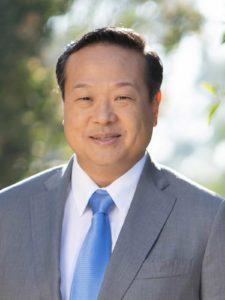
Every year, U.S. scientists run hundreds of clinical trials that study promising new drugs to treat cancer. Such trials can be a hopeful alternative for patients who have exhausted conventional care – as long as those patients meet the often-rigorous eligibility rules. Unfortunately, only about 8% of U.S. cancer patients currently participate in clinical trials, in part because so many are disqualified.
Lung-cancer specialist Edward Kim, physician-in-chief at City of Hope Orange County, campaigns to make the trials more inclusive by reducing what he calls excessive and unneeded criteria. In 2017, he led a task force that helped persuade the National Cancer Institute to change its protocols.
Kim’s ongoing work could help researchers as well as patients, making it easier to conduct and complete trials and get lifesaving treatments into the public domain.
3. Laying the groundwork for RNA vaccines
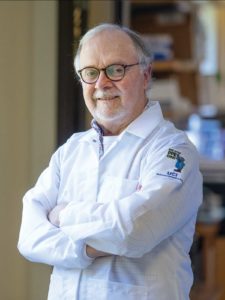
With life approaching a pre-pandemic norm, Philip Felgner is feeling justifiably proud.
Felgner, 72, UCI’s director of Vaccine Research and Development Center, has spent more than half of his lifetime helping to lay the groundwork for the cutting-edge messenger RNA vaccines that have saved countless lives.
Older vaccines stimulated the body’s immune system with weak or inactive viruses or bacteria. The game-changing new vaccines deployed in the pandemic instead use genetically engineered mRNA to teach cells to make a protein that triggers an immune response.
Felgner’s contributions date to his 1984 discovery of lipofection technology, in which scientists insert genetic material into a liposome – an artificial nanoparticle – to deliver it to cells. Since then, hundreds of other researchers have helped develop the field.
Last year, Felgner was one of seven scientists to win Spain’s prestigious Princess of Asturias Award, but he isn’t resting on his laurels. At the start of the pandemic, in February 2020, his lab began monitoring local virus exposure and later measured the stunning efficacy of the mRNA vaccines.
“My proudest moment is now,” he says, “to see the results of my contribution and those of hundreds of other scientists come to fruition in such a dramatic way.”
4. Exploring Innovative treatments to save lives
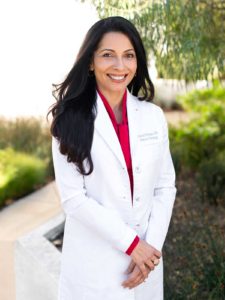
Chaitali Nangia belongs to a vanguard of researchers using cutting-edge approaches to tackle cancer. As co-director of the cellular therapy research program at Hoag Family Cancer Institute, she is leading an unusual clinical trial seeking a treatment for advanced triple-negative breast cancer.
This aggressive, metastatic cancer is more common among women under 40, African-Americans and Latinas, and is resistant to conventional hormonal treatments. “This is a huge unmet need,” Nangia says of her technique, which deploys low-dose chemotherapy and immunotherapy to fight the disease while minimizing side effects. In the treatment, “natural killer” stem cells destroy cancer cells, she says, while retraining the immune system to more effectively fight cancer in the future.
Nangia, 48, a New Delhi-born hematologist and oncologist, says she is motivated by her patients’ “desire to live and fight. It’s not just their lives but their whole families’ lives that are affected. They’re so inspirational. They’re leading by example and ready to bring their A-game while facing the toughest of challenges.”
5. NURTURING OC’S HEART OF INNOVATION
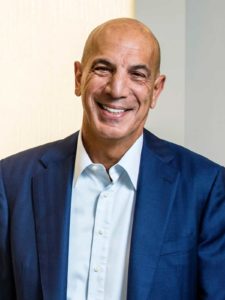
Under Michael Mussallem’s leadership, Edwards Lifesciences has become Orange County’s most valuable publicly traded company, with nearly $6 billion in annual sales from its novel, life-sustaining therapies, including a new, noninvasive device to measure cardiovascular blood flow, and a first-of-its-kind replacement heart valve, made from more resilient cow tissue. Edwards invented the first successful heart valve, which, after saving a patient’s life in 1960, has since helped more than 2 million others. Mussallem, 69, has served as its CEO since it went public in 2000. The company is staying focused on heart disease, the leading cause of death in the United States and globally, and spends $1 billion annually on research.
“We don’t like to just take little steps but to really do some of these transformational steps that change the way medicine is practiced, that no one has ever done before,” Mussallem tells the Standard.
The CEO was born to a working-class family in Gary, Indiana, and at 18 worked in a local steel mill to pay for his chemical engineering degree at the Rose-Hulman Institute of Technology. Earlier this year, he told the Orange County Business Journal: “I get inspired by what exists in this county, by our nonprofits, by our businesses, by our universities. It’s something to be proud of. It’s remarkable.”
6. CHASING A CURE FOR DIABETES
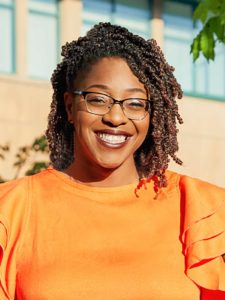
Growing up in Pensacola, Florida, Dequina Nicholas used to watch her mother, who has Type 2 diabetes, stab her finger several times a day to test her glucose, or blood sugar.
“It looked so uncomfortable,” she says. “I thought there had to be a better way to deal with this disease.”
Nicholas, 33, an assistant professor of molecular biology and biochemistry at UC Irvine, is now pursuing that answer – and her prospects improved last summer when she won the National Institutes of Health Director’s New Innovator Award, which supports early-stage investigators working on novel projects. Nicholas hopes to better understand the impact of diet on chronic inflammation in Type 2 diabetes, one of the leading causes of death in the United States and particularly common in the Black community.
The award comes with $1.5 million, Nicholas says, which means that “for the next five years we have funds to recruit patients and pay for staff. I want things to get better and better, and this will help.”
7. Mapping the human brain
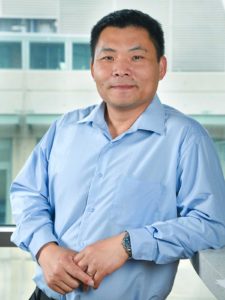
Xiangmin Xu leads a UCI interdisciplinary team – including neuroscientists, engineers, virologists, computer scientists and mathematicians – that is raising new hope for early treatments of crippling brain disorders such as Alzheimer’s, depression and epilepsy. In September, Xu’s Center for Neural Circuit Mapping began collaborating with two other institutions on a five-year project, backed by $126 million in federal funds, to map the human brain in unprecedented molecular detail.
“What is most exciting about our work is that we have the potential to identify early warning signs of disorders such as Alzheimer’s disease when they are still treatable,” he says.
In a key breakthrough, Xu, a professor in the Department of Anatomy and Neurobiology, says he and his collaborators have already discovered ways to reopen windows of neural development in adults, paving the way for previously unthinkable remedies.
8. Expanding the future of local health care
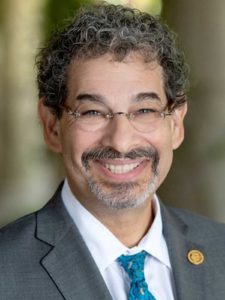
Pediatric cardiologist Steve Goldstein thinks Irvine is “a bit of paradise,” and he’s working to make it even better. As vice chancellor of health affairs for UC Irvine, Goldstein is currently overseeing UCI Health’s new $1.4 billion medical complex under construction on Jamboree Road, an expansion that should significantly boost Irvine’s reputation as a hub of health-science innovations. He describes his job as “removing roadblocks so that the extraordinary faculty, staff and students can create the future of health care and wellness.”
Goldstein already leads a $2.4 billion medical complex, which has some 11,000 employees, serves more than 3 million people, and includes UCI Health, the Susan & Henry Samueli College of Health Sciences and the UCI centers and institutes of health at work on innovative treatments and research.
9. Treating the roots of blindness
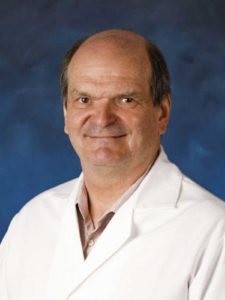
Krzysztof Palczewski, a Donald Bren professor at the UCI School of Medicine, is exploring the prospects of precise genome editing to treat inherited retinal illnesses – a development he expects will revolutionize his field and help treat causes of human blindness within the next decade. In a new paper published in the Proceedings of the National Academy of Sciences, Palczewski and other researchers chart the potential of the cutting-edge technology to help address disorders of the retina, including age-related macular degeneration.
For decades, Palczewski, an internationally renowned chemist, pharmacologist and vision researcher, has been studying the molecular basis of retinal diseases. With fellow researchers, he has published more than 500 papers and holds 22 patents for discoveries, including novel treatments of common eye disorders.
Palczewski says he has been fascinated by the retina ever since his high school years in Wroclaw, Poland, adding: “Just imagine, you have a photon absorbed in your eye, and it is converted into visual sensation, not from magic but chemistry.”
10. DELIVERING ‘HOPE’ ON TIME, AND UNDER BUDGET
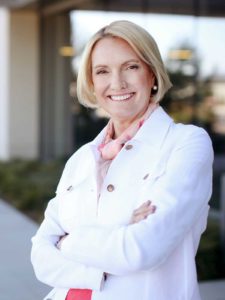
Big construction projects rarely get finished on time and without extra cost. Add the worldwide logistical crises, and the odds fall even lower. So when City of Hope Orange County’s new cancer outpatient center opened in August, one month early and within its budget, it said a lot about the leadership of Annette Walker.
Walker was already a health care celebrity, listed in 2019 and 2020 as among the nation’s 100 most influential health care leaders by Modern Healthcare magazine. Before taking over as City of Hope Orange County president in 2018, she served as president of strategy for Providence St. Joseph Health, the nation’s third-largest health care system, while also partnering with her husband, Chuck, in the rearing of six children. Today, with their youngest child 21 years old, the two have taken in a 19-year-old refugee from Sudan.
Walker credits some of her leadership skills to her domestic management experience. “With big families, of necessity you have to learn to work together,” she says.
She spent the first 15 years of her career as a clinical lab scientist and lab director. In 1992, she was 40 years old, with four kids, when she enrolled for a master’s degree in health care at the University of Minnesota. She got pregnant again while in school, but credits Chuck – her “parent partner” – for encouraging her to continue.
Walker says she had never before been responsible for a large construction project before taking on City of Hope’s $1 billion expansion, which includes both the four-story Lennar Foundation Cancer Center, at Barranca and Alton parkways, and a new hospital scheduled to open in 2025. But she soon figured out her winning strategy.
“Every day there was some new threat of not opening on time,” she recalls. “We had these regular meetings, and people on the team would say we had to push back the opening. We could have pushed it back 400 times, but I would always say the same thing: We wouldn’t make that decision until Aug. 21 – one month before the planned opening – when we would search for any mitigation strategy and figure out how to make it work.”
She says her experience taught her that “when you keep a vision and hold firm to it, you can call out in people the abilities to do things they didn’t know they could do.”









